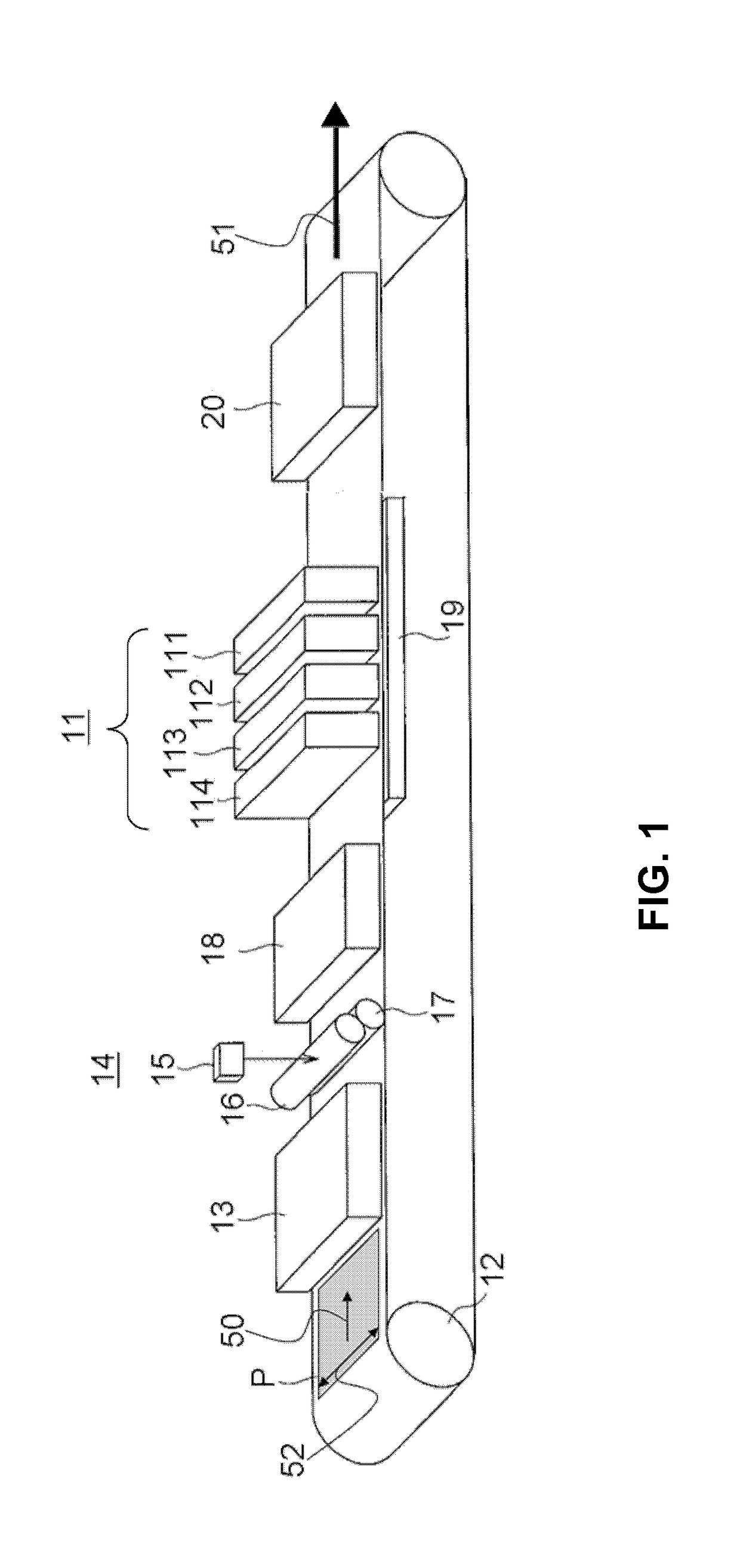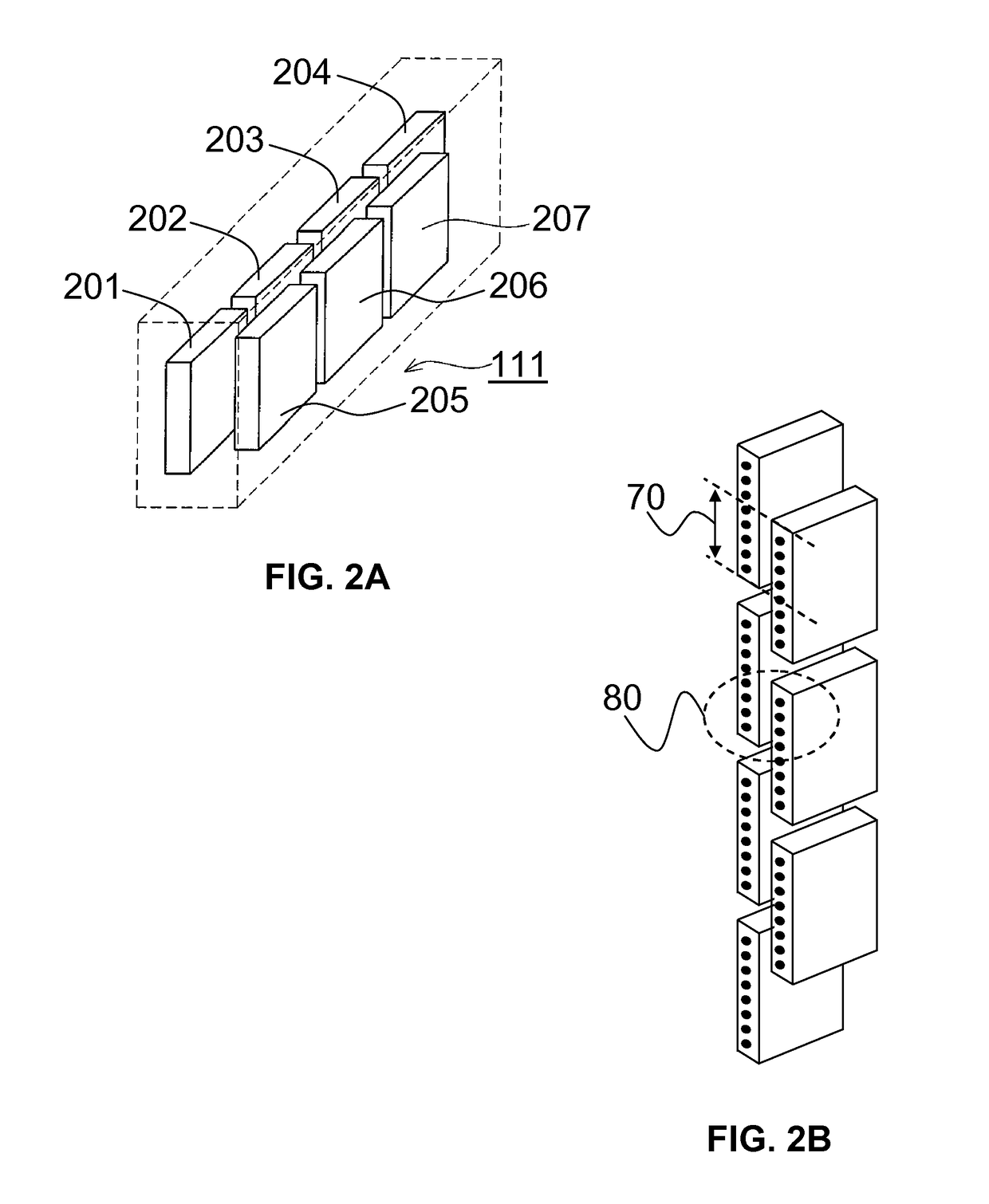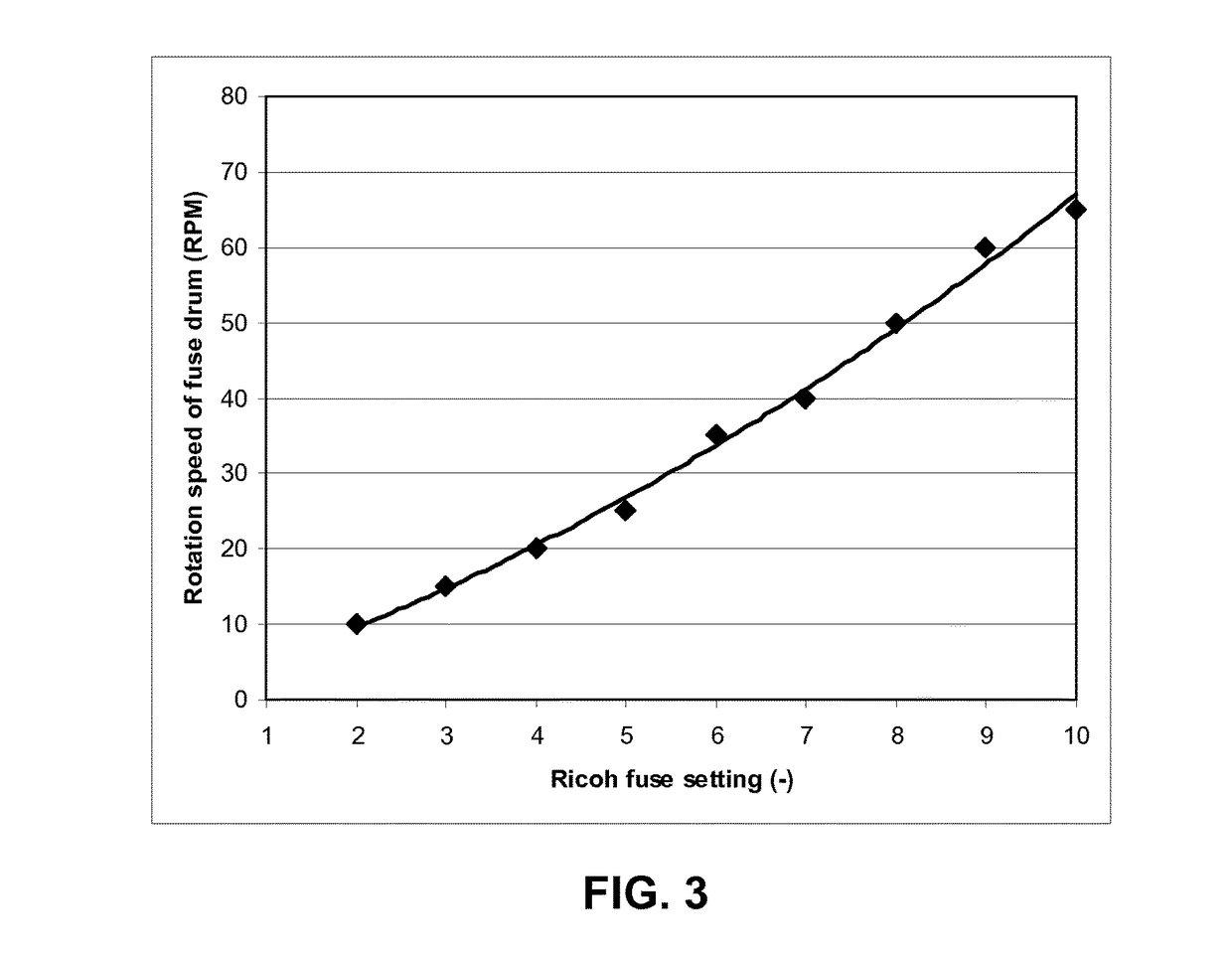Ink composition
a technology of composition and pigment, applied in the field of pigment composition, can solve the problems of affecting the drying speed of a print and/or the required fuse energy, requiring relatively high fuse energy to be suitably used, and exhibiting too low drying speed, etc., to achieve high tg, high mfft of pigment composition, and high tg.
- Summary
- Abstract
- Description
- Claims
- Application Information
AI Technical Summary
Benefits of technology
Problems solved by technology
Method used
Image
Examples
examples
Experimental and Measurement Methods
Fusing Experiments
[0128]Fusing experiments are performed with a Ricoh Fuser, model 592 of Ricoh company LTD. The Ricoh fuser comprises a rotatable drum (fuse drum) having a diameter of 20 cm and a page-wide Halogen fuse lamp having a power of approximately 750 W. The fuse lamp is arranged at a position opposite to the fuse drum at a distance of 3 cm. The Ricoh fuser can be operated at settings from 1 to 10. Each setting corresponds to a rotation speed of the fuse drum. FIG. 3 shows a correlation between the Ricoh fuse setting (x-axis) and the rotation speed of the fuse drum (y-axis), in revolutions per minute (RPM). The rotation speed of the fuse drum increases with an increasing Ricoh fuse setting. The exposure time to fuse radiation of a sheet of recording medium transported by the fuse drum decreases with an increasing Ricoh fuse setting, hence the applied fuse energy decreases with increasing Ricoh fuse setting. All fusing experiments performe...
example 1
[0140]The working method of Comparative Example A was repeated and 2,5,7,10-tetra-oxa-undecane (TOU; manufactured by Lambiotte&Cie and obtained from ICS) was added in an amount of 3 wt % relative to the total ink composition. To maintain the viscosity of the ink composition comparable to the reference ink of comparative example A, the amount of the acetal (TOU in the present example) was compensated for, by reducing the amount of water. The obtained ink composition is shown in Table 1.
examples 2-3
[0141]Example 1 was repeated. As the acetal cosolvent, TOU was substituted for Methylal (example 2) and Glycerol formal (example 3), respectively, both manufactured by Lambiote&Cie and obtained from ICS. The obtained ink compositions are shown in Table 1
PUM
| Property | Measurement | Unit |
|---|---|---|
| MFFT | aaaaa | aaaaa |
| weight % | aaaaa | aaaaa |
| weight % | aaaaa | aaaaa |
Abstract
Description
Claims
Application Information
 Login to View More
Login to View More - R&D
- Intellectual Property
- Life Sciences
- Materials
- Tech Scout
- Unparalleled Data Quality
- Higher Quality Content
- 60% Fewer Hallucinations
Browse by: Latest US Patents, China's latest patents, Technical Efficacy Thesaurus, Application Domain, Technology Topic, Popular Technical Reports.
© 2025 PatSnap. All rights reserved.Legal|Privacy policy|Modern Slavery Act Transparency Statement|Sitemap|About US| Contact US: help@patsnap.com



